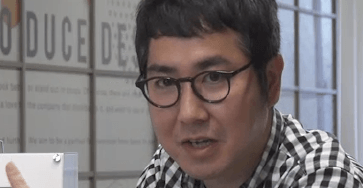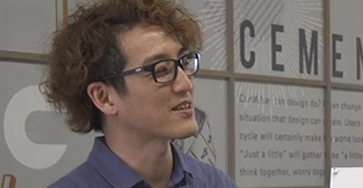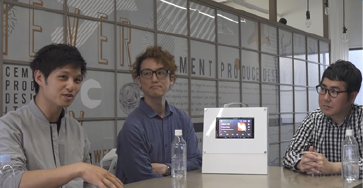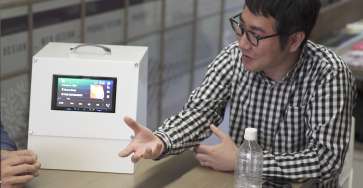INTERVIEW 01
The design goals
for the new AV receiver
INTERVIEW 02
The process of connecting
the UX and UI with the final design
INTERVIEW 03
Connecting with the market
and the end-users
INTERVIEW 04
The future of animation
and UX design
INTERVIEW 05
Pioneer's commitment
to function and form with
the new AV series receivers
The process of connecting
the UX and UI with the final design
Q: So far, we've talked about the UI and UX stages of the design process. Do you divide other aspects of designing a product into separate processes? Or, is every stage part of one big design process?
Kakimoto:
We think it's all one process. The UX team develops a concept of brand value that the UI team turns into something that users will actually use, so UI designers must consider the UI, of course, but must also understand the overall UX goals..
Roy:
I think that every member of a project has to take some responsibility for the UX, it can't be the sole responsibility of the UX team. Just think about what the words "User Experience" imply - the UX is the full scope of how users interact with a product. A user's experience encompasses everything from the way a product works, to how it looks, feels, and sounds. In other words, the design of the UX isn't complete until all parts of a product come together as a whole.
Q: What are the priorities when designing a product?
Roy:
When you are working with a client or as part of a team when designing a product, it's essential that all members involved have the same understanding of the overall direction of the project and its ultimate goals.
Q: Do you sometimes have to change the design direction midway through a project?
Roy:
If we have to change course regarding the design, then that's an important task, but so is understanding the reason why we have to make such a big change. The reason for changing a design might be because the original design didn't end up looking like we intended, or the decision might be based on the opinions or the experience of the team leader. Other times, the market for the product itself might change so that we have to alter the design to match the latest trends. Still other times, we might uncover new information while researching the design, and decide that applying these findings by making changes now will lead to a better final product.
Q: Please describe the different stages of the UI design process, from the planning to product design stages.
Kakimoto:
First, we get input from the product planners and then we make sure that we have a full understanding of the plan for the product. We review the data we've accumulated over the years developing similar products, and think about how car audio systems should evolve from here on out. From there, we pinpoint the specific problems that we want to solve in the design of the new product. Another thing we consider is the market as a whole. There are a lot of other manufacturers that compete in the same sector, so we investigate what they are up to as well. Based on our findings, we slowly distill the project plan down to the keywords for the design.
Akatsu:
So you textualize these ideas?
Kakimoto:
Correct. First we distill the keywords and then we work on expanding the concept of the product from roughly sketched ideas to more fully formed visuals.
Akatsu:
I see, but once you complete the product, the rest is in the hands of the retailers and the market, right? That part sounds really hard. At least with a manga series, you can change things around even after it starts being published.
Kakimoto:
Is that so?
Akatsu:
Well, the story and plot of a manga are important, but characters are the only things you really shouldn't mess with. Anything else can be changed and in many cases that's exactly what happens.
Kakimoto:
So for example, you could make a small change to the plot introduced in chapter one in the next chapter?
Akatsu:
Sure. In general, the most important thing is to get your readers or viewers to empathize with the emotions and actions of your characters. As long as there are fans who care about those things, it's okay to change other elements of the work if necessary. Of course, not having to make any changes like that means that the work was fully realized from the start, which is great.
Kakimoto:
In our case, the products we design are built with the help of a huge staff of software developers, so if a product doesn't have a consistent design, it will have adverse effects on everyone's work. If that happens, we aren't going to end up with a quality product. This is why consistency is the unshakeable foundation of our design philosophy.
Akatsu:
By contrast, a manga story might start off talking about a "sensor-like device", but midway through the story you can have the top open up to reveal that the sensor is also a deadly weapon! (Laughs) Of course, there's no way you could do that with a normal product.
Kakimoto:
As long as your customers are happy with the changes you make, it's okay to make them, right?
Akatsu:
Right. That's why internal logic in a manga or anime is so important. As long as the central concepts are consistent, there shouldn't be any problems.
Kakimoto:
The parts that you can't change later are what matter the most from the start. The core elements have to stay the same as you go. I think the same could be said about our work, too.
to be continued Vol.3




